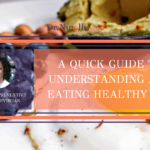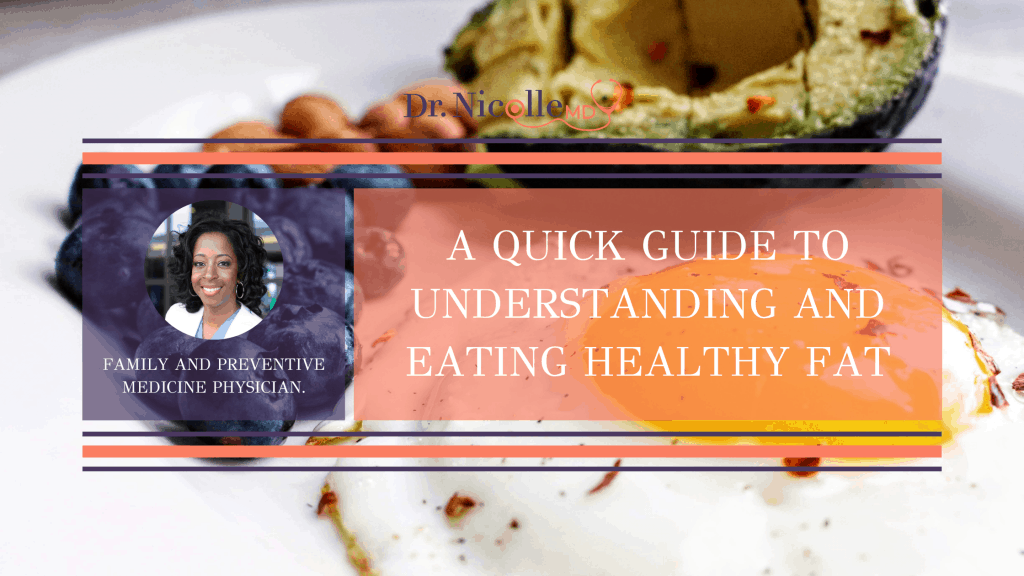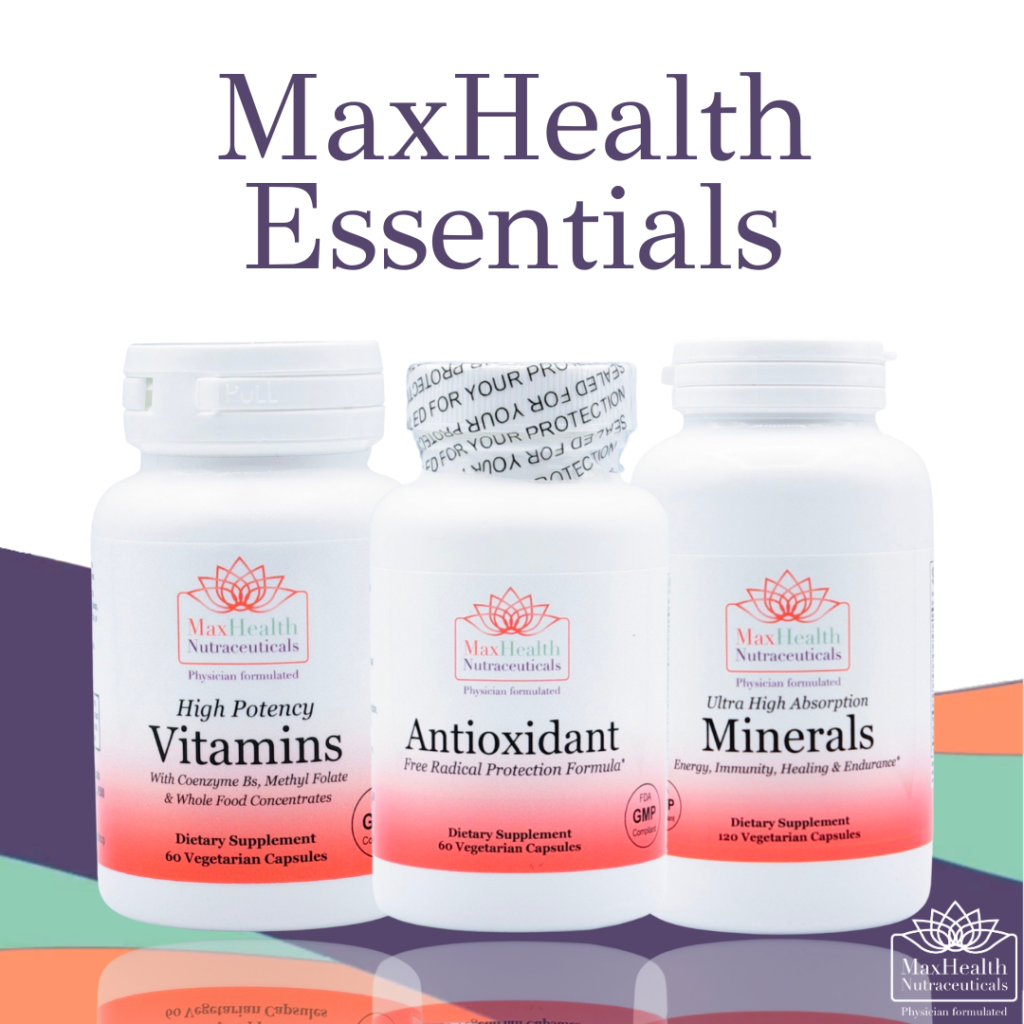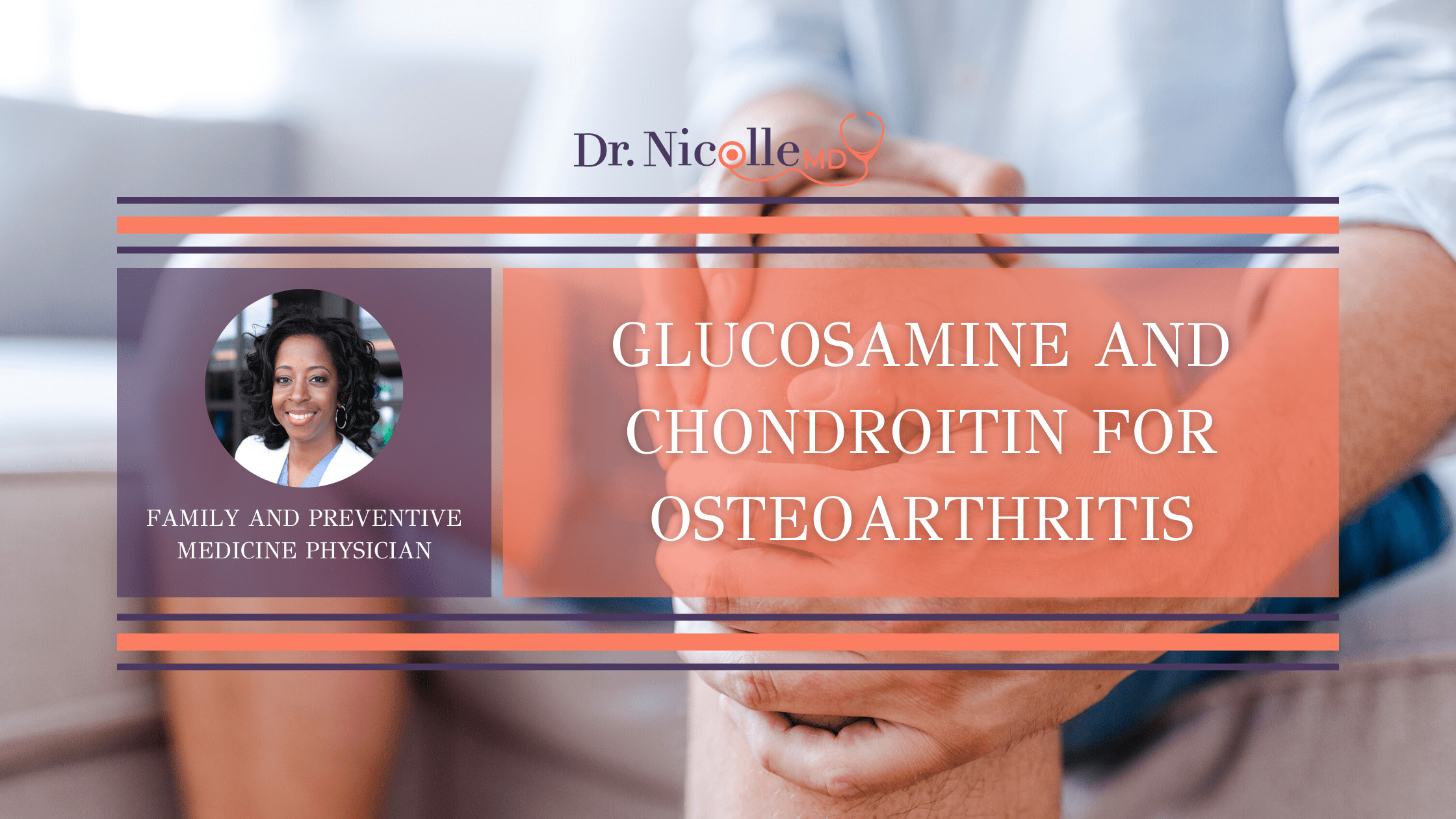

It’s Wellness Wednesdays! Today, I’ll give you a simple guide to understanding and eating healthy fats. If you want to lose weight, you probably know you should eat less and exercise more. And, like most people, you’ve probably heard that reducing your fat intake is critical to weight loss. But what does this mean, exactly? With so much conflicting information out there, this can be a confusing topic. Let’s start with the basics. What are fats? Fats are a type of nutrient found in food. They are considered macronutrients, along with carbohydrates and proteins. Fats are needed to help support cell growth and repair, maintain healthy skin and hair, and keep your organs functioning properly. Fats are also essential to the absorption of some vitamins.
Fat is the most misunderstood of all the macronutrients and has a bad rap in the diet industry. Excess body fat contributes to the development of many common diseases such as heart disease and diabetes. But in the past two decades, research has shown that not all fats are equal, and some fats can even help with weight loss. When fat is digested, it is broken down into fatty acids and glycerol. There are four basic types of fatty acids: monounsaturated, polyunsaturated, saturated, and trans fat. The first two types of fat are considered “healthy fats” for your body.
For years, experts have been telling us to eat less fat. Now, the focus has switched. Today we know that not all fat is created equal. The types of fat you eat are more important than the overall amount. To stay healthy and even lose weight, educate yourself and eat more healthy fats.

Understanding Healthy Fats
1. Distinguish between good and bad fats.
There are four major types of fats. Eat more of the good monounsaturated and polyunsaturated fats. The two bad ones to cut down on are saturated fats and trans fats.
2. Recognize the benefits of good fats.
Monounsaturated and polyunsaturated fats lower your cholesterol and reduce your risk of heart disease. They’re found in foods like vegetable oils, olive oils, soy products, fish, nuts, and seeds. Good fats are good for your health and play an important role in your health. Bad fats are saturated and trans fats. Bad fats raise your LDL, or the bad cholesterol in your blood.
3. Appreciate the special powers of omega-3s.
Omega-3 fatty acids are a type of polyunsaturated fat that improve cardiovascular health, as well as reduce your risk for cancer, cognitive decline, depression, and other serious conditions. They also play an important role in your cognitive functions and emotional wellbeing. Good sources include fatty fish such as salmon, tuna, or try adding fish oil supplements into your diet, and flaxseed or flax oil. The omega-3s found in fish oil include EPA and DHA, which have been linked to a number of health benefits.
4. Guard against the impact of bad fats.
A diet high in saturated fats and trans fats makes you prone to heart disease and weight gain. Saturated fat comes from animal products like red meat. Commercial baked goods often contain trans fats. Try to cut out red meat, sparingly eat baked goods, and focus on healthy foods like whole grains, fruits, and vegetables. This will help you cut out the bad fats in your diet and make sure you’re getting enough of the good, essential fatty acids.
5. Get familiar with how fats affect cholesterol.
Cholesterol levels depend more on the types of fats you eat than on dietary cholesterol. Enjoy an egg for breakfast while you’re focusing on eating more good fats.
6. Learn about refined carbohydrates.
Products like fat-free cookies are often high in sugar and refined carbohydrates. They actually raise the risk of heart disease and diabetes just as much as the saturated fats they’re replacing.

Eating More Healthy Fats
1. Follow USDA recommendations.
Limit your total fat intake to 20 to 35 percent of the calories in your diet. Try to keep saturated fats under ten percent of the calories in your diet, and trans fats under one percent.
2. Watch portion sizes.
All fats contain about nine calories per gram while proteins and carbohydrates are only about four calories. Eat even good fats in moderation.
3. Check labels for trans fats.
Many restaurants and food manufacturers have stopped using trans fats but check for yourself. Read all the ingredients on the label to see if they contain any partially hydrogenated oils. This is a dead give-away for the presence of trans fats.
4. Eat more whole foods.
Fill up your plate with natural foods including vegetables and whole grains. It’s the simplest way to avoid the unhealthy fats in fast food and processed snacks.
- A whole food is basically something your grandparents would recognize as a single food item. For example, a potato is a whole food. Potato chips, which have multiple ingredients and aren’t recognizable as potatoes, are not.
5. Opt for liquid oils.
Healthy fats tend to be liquid at room temperature, so reach for oils instead of butter or margarine. Dip your bread in olive oil and cook with canola oil at home.
6. Find substitutes.
Look for alternatives to red meat and whole fat dairy products. Dine on three bean chili instead of hamburger. Drink skim milk or low fat milk instead of the whole fat variety. Pizza and cheese are the biggest sources of saturated fat in the typical American diet, so satisfy your cravings for Italian food with pasta in marinara sauce.
7. Serve seafood twice a week.
Many experts recommend eating fish at least twice a week as a way to cut back on saturated fat. Fatty fish like salmon, albacore tuna, and mackerel will have the highest omega-3 content.
Recently, the United States Department of Agriculture (USDA) issued a report declaring that Americans are eating healthier than they have in years past. This is great news. However, we must remember why we’re eating healthier. It’s not simply to be healthier, but to help our bodies function optimally. And that means eating a healthy, balanced diet. We must stick to a reasonable caloric intake and eat a variety of nutrients to ensure our bodies get what they need.
Lose weight and improve your overall health by cutting down on saturated fats, eliminating trans fats, and eating more monounsaturated and polyunsaturated fats. That translates into less red meat and cheese and more beans, fish, flaxseed, vegetable oils and low fat dairy products. You’ll love how you feel!
I would love to give you a free resource sheet to support your overall wellness. Click the button below to receive your gift.
I really wanted to talk about this topic today because your natural health and wellness is important. You can adopt healthy lifestyle practices that improve your health, your environment, and enrich your life, which can in turn improve the lives of those close to you. You have the power to break the cycle of poor health, including chronic disease, so that you can leave a legacy of health to your loved ones.
I use functional medicine and lifestyle medicine as the first line of treatment, before medications, to treat lifestyle-related chronic diseases. Lifestyle-related chronic diseases include diabetes, hypertension, obesity, and some cancers, just to name a few. Lifestyle practices, such as eating a whole-food plant-based diet and regular physical activity, can help you lose weight, reverse some chronic diseases (if you suffer from them), and can even help you with detoxification. In certain cases, these approaches may even outperform pharmaceutical therapy.
But I always tell my patients that conventional medications may be appropriate at this time to prevent catastrophic illness, but over time, you can work to make the necessary lifestyle changes to possibly reduce and/or eliminate medications. Please remember to always consult your physician for your particular needs and circumstances prior to making any decisions whatsoever.
Is Dietary Supplementation Right For You?
For some people, vitamin and mineral supplements offer important health benefits. Supplements are designed to fight deficiencies found in our diet and complement the food we eat regularly. Supplements are basically “helping hands” to our daily food.
If you suspect that you aren’t getting the nutrients you need, consider shifting your focus from supplements to eating better.
But it is very important to note that we are not eating the same foods we ate years ago because the soils have been depleted of critical nutrients through current industrial farming practices. And because the soil is not as good as it used to be, the food supply (grown from the depleted soil) is not as good as it used to be. For example, you are not getting the same levels of magnesium as you would have gotten 30 or even 50 years ago.
Second, much of the food has been genetically altered, which can impact the inherent and unique nutritional composition that each food possess. For example, ancient einkorn wheat has less gluten, more protein, more Vitamin A, and more beta carotene, than modern genetically modified wheat.
Third, the toxic load in the environment today is much higher than 100 years ago. We can see this with global warming, toxic landfills, polluted oceans and waterways, etc. Toxicity levels interfere with nutrient assimilation and absorption not just into the foods, but into our bodies as well.
So… if you are unable to eat better, the supplements in my MaxHealth Essentials Bundle may provide the extra boost you need.
These are my favorite Wellness and Immune-Boosting Supplements to use! This MaxHealth Essentials Bundle will ensure you have the intake of the important vitamins, minerals, and antioxidants to decrease inflammation and boost your innate wellness day and night. Taken together, it’s a solid plan for increasing your body’s natural resiliency.
For best results make sure you use the supplements with dietary changes including a whole food plant-based diet, regular exercise (at least 2-3x per week), regular sleep (8 hours per night), and intermittent fasting (at least 1-3x per week).
Weight Monitoring
Since weight management is very important in combatting chronic diseases, I recommend that you be mindful of your weight and its fluctuations, and that you monitor your weight AT LEAST on a weekly basis. I recommend a scale that includes a body composition monitor (*this scale cannot be used with a pacemaker or other implanted devices).
Physical Activity
Physical activity (or exercise) can improve your health and reduce the risk of developing several chronic diseases like high blood pressure, type 2 diabetes, and cancer, just to name a few. Physical activity can improve your mood, boost your immune system, help you maintain a healthy weight, and is a great way to detox your body!
I often recommend yoga and resistance training for physical activity, but as you are aware, there are plenty of forms of “movement” that you can do! But for the basics, especially if you’re just getting started, yoga and resistance training are where I would start.
Yoga
Yoga can be a great way to improve your strength and flexibility, manage your stress, improve your heart health, and lose weight! I recommend using a grounded yoga mat to connect yourself with the earth and reduce inflammation.
Resistance Training
Resistance training is the mainstay for overall health. It not only has beneficial effects on reducing body fat, it also increases muscle size and strength. Check out some basic dumbbells/free weights that I recommend to everyone.
Another alternative for dumbbells/free weights are resistance bands. They are great for physical therapy, yoga, strength training, and excellent for traveling.
Remember, living a healthy lifestyle including eating a whole foods plant-based diet, regular physical activity, and reducing stress are the best ways to maintain a healthy weight. Let me know what you think in the comment section below.

Dr. Nicolle Martin
Some of the links in this article are "affiliate links", a link with a special tracking code. This means if you click on an affiliate link and purchase the item, we will receive an affiliate commission.
The price of the item is the same whether it is an affiliate link or not. Regardless, we only recommend products or services we believe will add value to our readers.
By using the affiliate links, you are helping support our Website, and we genuinely appreciate your support.
Last updated on February 4th, 2022 at 12:58 pm

Minimize Medications. Maximize Health.
Are you super busy but need to take control of your health? Are you tired of being tired? Subscribe to my “Minimize Medications, Maximize Health Blog” and I’ll give you 7 Tips to Get Healthy in No Time absolutely FREE.






